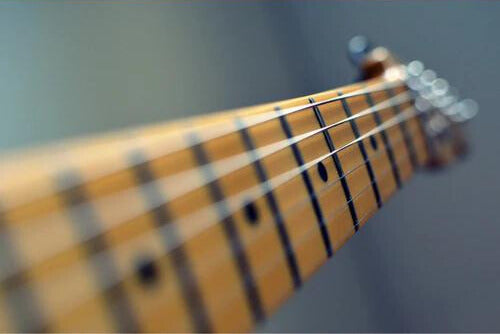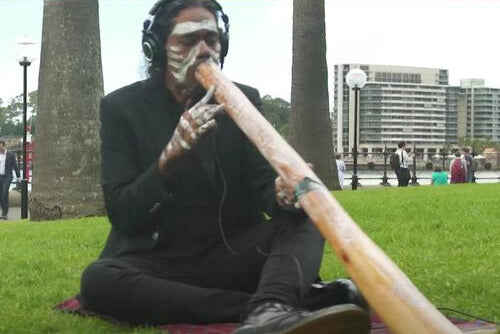The Pursuit of The Mute

Are you having trouble with unwanted notes ringing in your chords? Have you ever wondered how your favourite guitar heroes bang away on riffs so effortlessly without hitting the wrong strings? Are you hoping to add a little extra weight to your playing? The answer is muting! Simply put, muting is the technique of deadening, or altering the tone produced by a string. There are all sorts of techniques and applications for this, from palm muting and strumming chords, to slide playing and tapping. Today, we’ll focus on perhaps the most essential of them all: left hand muting (unless you're a left handed guitarist, in which case it's right hand muting).
To start, let’s talk about the Chuckas.
Chucka (noun)
To hold the guitar strings lightly, without pushing them down onto the frets, and strum. The notes are entirely dead, and the only sound produced is the rhythmic slap of the pick on the strings. The result is a kind of percussive chop called a Chuck or Chucka, depending on whether you strum only down (Chuck), or down-up (Chuck-a).
A short note for all the first time Chuckers - if your muting hand gets too close to the 5th, 7th, or 12th frets, you may end up accidentally creating some bell harmonics! These harmonics sound nice, but they’re not what we’re after here. Use Chuckas within riffs to add some rhythmic variety, imitate the snare drum, or simply use them as a nifty count-in. Here's an example from a track you might recognize:
Now that we’ve covered the basics on muting all the strings, how can you mute only some, while fretting others? And why would you want to? A common example of when you need to mute only certain strings is when playing power chords. Everybody loves power chords because they move around the fretboard so easily, and because they’re so...powerful! But since a power chord uses only 3 of the guitar’s strings, how do you avoid accidentally hitting the other 3!?
Well, you can try to strum the 3 strings that make up the power chords very precisely with your right hand, but they’re not called Precision Chords! What you want to do is use your first finger (index), the one that plays the ‘root’ of the chord, to mute all the others. Here’s how:
- Get into position to play your favorite power chord, any power chord at all.
- Relax the angle of your index finger so that you play the ‘root’ (or bottom) note with the pad of your first finger, rather than the very tip.
- Gently let the length of your finger rest across the remaining strings.
- Use your other fingers to play the remaining notes of the power chord as usual.
With a little practice, you can even fret a note on the 5th string while overhanging your fingertip just enough to touch the 6th string and mute it. With the unwanted strings all successfully muted, feel free to strum away windmill-style just like Pete Townshend, and listen carefully as the added chuck (or chuck-a!) of the muted strings make your chords sound even more powerful!
Once you’ve mastered the muting technique behind simple chord shapes, you may be ready to apply the concept to playing whole melodic phrases, or riffs. This is a tricky business, and while the side of your first finger handles the bulk of the muting work, other fingers on the left hand and even the thumb may be called into service. This selective muting in the left hand allows you to play with more gusto with the right. Think of it as a trade-off: less precision in one hand for more precision in the other. Sonically, using this technique results in more punchy, beefy riffs, with an added rhythmic kick. Of course, not all guitarists favour the beefy sound. B.B. King mutes occasionally, but is known for his dynamics and precision. Jerry Garcia hardly ever mutes at all, while Stevie Ray Vaughan’s playing is almost exclusively beefy, and John Mayer employs a hybrid of both. Muting is not limited to Rock and Blues either. Wes Montgomery is a master at playing intricate jazz solos entirely in parallel octaves, picked with his right thumb, an effect that would be impossible without a precise muting technique.
To conclude, let’s use ‘Can’t Stop’ by the Red Hot Chili Peppers as an example.
If you were to play the notes in the iconic intro riff on a single string, without muting and strumming the others, it would sound completely different. Check out the punchiness and energy created when all the strings are muted so that the riff can be strummed, instead of picked! Learning to play this way can lead to more energy and commitment in your playing, and once you’re comfortable with the techniques, you won’t look back.
---
Dan Rougeau is a multi-instrumentalist, songwriter, and performer based in Montreal. Check out what he does here.
Want to level-up your playing? Pre-order your Jamstack 2 amp today!



